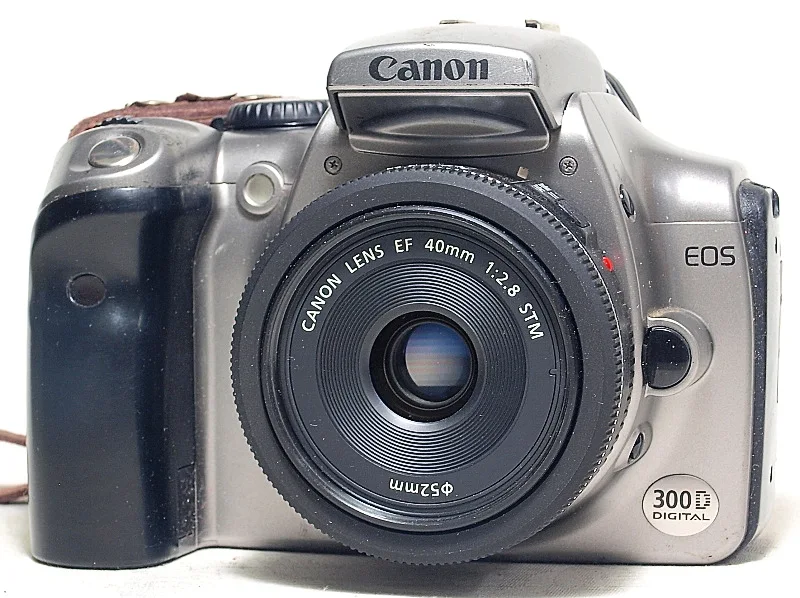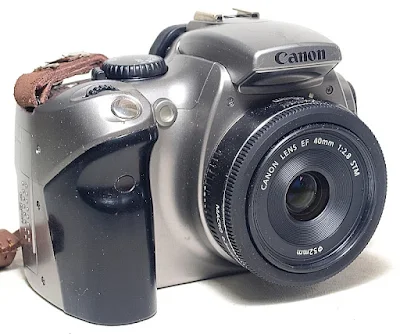The Canon EF 40mm f/2.8 STM, launched by Canon in 2012, was one of the first two lenses (the other being the EF-S 18-135mm f/3.5-5.6 IS STM zoom) produced by Canon to have the STM designation. The lens uses a linear stepper motor for focusing, which allows for silent focusing, a system now widely used for mirrorless cameras. It has also proved itself popular for movie recording.
While a 40mm focal length lens may be the odd one among the favorites, which could be a 35mm or 50mm prime, many photographers consider the 40mm as the 'perfect normal' lens on a 35mm full-frame camera. The lens is considered the best focal length for a do-it-all prime lens as it sits in the middle ground between the 35mm and 50mm lenses.
Aside from the autofocus system that the lens employs, the EF 40mm can also be focused manually, via an electronically-driven focus-by-wire manual system. The focus ring of the lens is not mechanically coupled to the lens, what it does instead is to instruct the camera to drive the lens's focus motor forward or aft according to which way the focus ring is turned.
Until the advent of smaller format lenses made for the new range of mirrorless cameras, the 2012 EF 40mm 1:2.8 lens was the smallest EF lens Canon has made. The lens measures 22mm thick and weighs only 130 grams, has 6 elements in a 4-group optical construction that includes an aspherical element to help reduce aberrations, Super Spectra coatings that minimize ghosting and flare, and a circular seven-blade aperture.
One super advantage for hobbyists and photo enthusiasts (like me) who like to work with both Canon's 35mm film and digital SLRs, is that Canon EF lenses can be used across the board with both EOS 35mm film SLR cameras as well as with both EF and EF-S lens mount models. On EF-S lens mount cameras, however, the crop factor of 1.6 must be considered.
The EF 40mm 1:2.8 STM is small enough, and light enough not to be seen as obtrusive when mounted on SLR camera bodies, and this adds to the advantage of making the lens perfect for most genres of photography, and best for portrait, street, and travel photography. The lens has a minimal focusing distance of 0.3 meters and an aperture range from f/2.8 to f//22.
The Street Shoot
I had the chance to do a street walk recently, with a quick session with the EF 40mm 1:2.8 STM mounted on an equally vintage 6MP CCD sensor Canon EOS 300D, the first entry-level digital SLR camera introduced by Canon in 2003. It was a rewarding experience and I came away beaming and smiling with the images I managed to capture.
On the APS-C sensor of the EOS 300D, the lens is like a short telephoto, with a focal length equivalent to 64 mm on a 35mm full-frame camera. Though lightweight, the lens has a metal mount with a rigid plastic body, and precision made with a focus ring that rotates with a smooth, and well-damped action. The lens does not come with a hood.
Aside from the ridged grip of the manual focus ring, another ridged grip runs around the sides of the barrel beside the mount to aid handling when changing lenses.
Manual focusing on the EF 40mm, which is set by the AF/MF slider switch on the top of the lens barrel, works differently from Canon's USM lenses. For the 'focus-by-wire' system to work, the shutter button on the camera needs to be held at half press position while the focus ring is rotated. Focus is confirmed with a beep and flashing diode.
On the EOS 300D, the EF 40mm 1:2.8 STM is a solid performer. Focusing is fast, positive, and very quiet, and as shown in the images, there were no problems with focus accuracy or consistency for normal sunny day / bright-light shooting conditions.
Image sharpness was very impressive, with good results right across the frame. Lateral chromatic aberration is pretty low, and vignetting, as usual for a full-frame lens used on APS-C sensors, is negligible. So too is barrel distortion.
Lens Availability
The lens is readily available on auction sites with prices much to the liking of vintage lens enthusiasts. Highly recommended.






























No comments:
Post a Comment